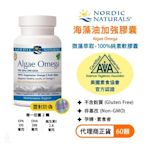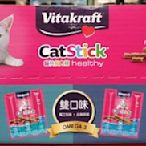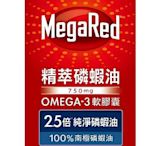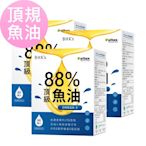Omega 3功效 相關
廣告採用純淨海域小型魚種,24 小時內提煉,經過多重專利製程,最後放入 PTP 獨立排裝,抗潮抗氧化. 確保魚油營養成分在新鮮的狀態下完整保留,打造出高濃度、高新鮮度、安全的魚油,補充純淨營養。
- 45 天滿意保證,開封也能退
三專管制,100%收到全新商品
無條件退貨是我們負責的方式
- 天然無添加主張
全品項選用天然來源原料
用純淨無添加保健品補充營養
- 45 天滿意保證,開封也能退
過去一個月已有 超過 1 萬 位使用者造訪過 daikenshop.com
德國頂級魚油-高濃度魚油首選!rTG型式好吸收、小顆粒好吞嚥,有效維持思緒清晰,調節生理機能. 連續榮獲世界頂級金獎,Omega-3高達97.7%!有效維持思緒靈活,促進新陳代謝,維持健康。
三得利益思健官方正品,Omega+蝦紅素補充,4週身心保養有感,出貨達1000萬瓶,定期購最高再享8折. 益思健獨特Omega3+6幫您補充關鍵快樂好油。享受工作專心有神、樂觀看得開的生活,4週就覺得有差
搜尋結果
 $1700【現貨】Nordic Naturals 北歐天然 海藻油加強膠囊 60顆 AlgaeOmega 純素 Omega 3小宅私物 / 小宅好食
$1700【現貨】Nordic Naturals 北歐天然 海藻油加強膠囊 60顆 AlgaeOmega 純素 Omega 3小宅私物 / 小宅好食 $750【小如的店】好市多代購~VITAKRAFT 貓快餐肉條-鮭魚+OMEGA 3及鰈魚+OMEGA 3(共4入)131338下標前請先詢問是否有貨
$750【小如的店】好市多代購~VITAKRAFT 貓快餐肉條-鮭魚+OMEGA 3及鰈魚+OMEGA 3(共4入)131338下標前請先詢問是否有貨 $2099【Dr.Brain 關鍵智】兒童 3合1學習能量飲EX升級版 蘋果口味 20mL 30入/盒(魚油 DHA Omega-3)購物中心
$2099【Dr.Brain 關鍵智】兒童 3合1學習能量飲EX升級版 蘋果口味 20mL 30入/盒(魚油 DHA Omega-3)購物中心 $359♥緣來是你♥日本原裝進口.NPG ペペ360 Pepee OMEGA 3 中高濃度水溶性潤滑液~緣來是你~下單贈水果香味潤滑液
$359♥緣來是你♥日本原裝進口.NPG ペペ360 Pepee OMEGA 3 中高濃度水溶性潤滑液~緣來是你~下單贈水果香味潤滑液![台灣公司貨RAW SUPPORT牧野飛行-Omega 3油 200ml(購買第二件贈送寵物零食x1包) 台灣公司貨RAW SUPPORT牧野飛行-Omega 3油 200ml(購買第二件贈送寵物零食x1包)]() $1075$1131台灣公司貨RAW SUPPORT牧野飛行-Omega 3油 200ml(購買第二件贈送寵物零食x1包)購物中心
$1075$1131台灣公司貨RAW SUPPORT牧野飛行-Omega 3油 200ml(購買第二件贈送寵物零食x1包)購物中心![好市多商品-Schiff MegaRed 精萃磷蝦油Omega-3軟膠囊(食品) 80粒 好市多商品-Schiff MegaRed 精萃磷蝦油Omega-3軟膠囊(食品) 80粒]() $1499好市多商品-Schiff MegaRed 精萃磷蝦油Omega-3軟膠囊(食品) 80粒好市多代購-附發票!當天寄出!
$1499好市多商品-Schiff MegaRed 精萃磷蝦油Omega-3軟膠囊(食品) 80粒好市多代購-附發票!當天寄出!![♚夏夏海外精品♚美國now諾奧濃縮深海魚油uitra omega-3 ♚夏夏海外精品♚美國now諾奧濃縮深海魚油uitra omega-3]() $912♚夏夏海外精品♚美國now諾奧濃縮深海魚油uitra omega-3♚夏夏海外精品♚
$912♚夏夏海外精品♚美國now諾奧濃縮深海魚油uitra omega-3♚夏夏海外精品♚![博士倫 Ocuvite 50歲以上成人護眼 葉黃素 金盞花 Omega 3 150顆裝 2025/11 博士倫 Ocuvite 50歲以上成人護眼 葉黃素 金盞花 Omega 3 150顆裝 2025/11]() $1200博士倫 Ocuvite 50歲以上成人護眼 葉黃素 金盞花 Omega 3 150顆裝 2025/11Y5295970969
$1200博士倫 Ocuvite 50歲以上成人護眼 葉黃素 金盞花 Omega 3 150顆裝 2025/11Y5295970969![BHK’s88% Omega-3頂級魚油 軟膠囊 (60粒/盒) 3盒組 BHK’s88% Omega-3頂級魚油 軟膠囊 (60粒/盒) 3盒組]() $2580BHK’s88% Omega-3頂級魚油 軟膠囊 (60粒/盒) 3盒組購物中心
$2580BHK’s88% Omega-3頂級魚油 軟膠囊 (60粒/盒) 3盒組購物中心![【藍光電影】叢林有情狼3:偉大的狼遊戲 Alpha and Omega 3: The Great Wolf Games(2014) 64-057 【藍光電影】叢林有情狼3:偉大的狼遊戲 Alpha and Omega 3: The Great Wolf Games(2014) 64-057]() $80【藍光電影】叢林有情狼3:偉大的狼遊戲 Alpha and Omega 3: The Great Wolf Games(2014) 64-057半島藍光
$80【藍光電影】叢林有情狼3:偉大的狼遊戲 Alpha and Omega 3: The Great Wolf Games(2014) 64-057半島藍光![熱銷 美國Puritan's Pride OMEGA-3歐米伽3深海魚油1000mg100粒 熱銷 美國Puritan's Pride OMEGA-3歐米伽3深海魚油1000mg100粒]() $377熱銷 美國Puritan's Pride OMEGA-3歐米伽3深海魚油1000mg100粒雅麗日化~滿999元免運費
$377熱銷 美國Puritan's Pride OMEGA-3歐米伽3深海魚油1000mg100粒雅麗日化~滿999元免運費![附發票 現貨 90顆 北歐天然寵物魚油 犬 貓 Nordic Naturals Omega-3 Pet 附發票 現貨 90顆 北歐天然寵物魚油 犬 貓 Nordic Naturals Omega-3 Pet]() $580附發票 現貨 90顆 北歐天然寵物魚油 犬 貓 Nordic Naturals Omega-3 PetY5770263823
$580附發票 現貨 90顆 北歐天然寵物魚油 犬 貓 Nordic Naturals Omega-3 PetY5770263823
Omega−3 fatty acids, also called Omega−3 oils, ω−3 fatty acids, Ω-3 Fatty acids or n−3 fatty acids, are polyunsaturated fatty acids (PUFAs) characterized by the presence of a double bond three atoms away from the terminal methyl group in their chemical
Omega-3 fatty acids, also called ω−3 fatty acids or n−3 fatty acids, are polyunsaturated fatty acids (PUFAs). Omega−3 fatty acids are important for normal metabolism.
- Uses
- Food Sources
- Health Effects
- Supplements
- Dangers
- Notes
- External Links
Often marketed and sold for consumption as part of the diet or in dietary supplements in contemporary societies, fish oils also have found roles in external use, as emollientsor as general ointmentsas well as in body art,or for alleged insulation against cold temperatures.
The most widely available dietary source of EPA and DHA is cold-water oily fish, such as salmon, herring, mackerel, anchovies, and sardines. Oils from these fish have a profile of around seven times as much omega-3 oils as omega-6 oils. Other oily fish, such as tuna, also contain omega-3 in somewhat lesser amounts. Although fish is a dietary source...
History
Fish oil became one of the earliest dietary supplements, and by the end of the 19th century, was used as a treatment for many diseases, including such ailments as tuberculosis and hysteria. The possible effects of fish oil and omega-3 fatty acids have since been studied in clinical depression, anxiety, cancer, and macular degeneration, yet they have not been proven effective.
Various recommendations
In a 2009 letter on a pending revision to the Dietary Guidelines for Americans, the American Heart Association recommended 250–500 mg/day of EPA and DHA. The Guidelines were revised again for 2015–2020; included is a recommendation that adults consume at least eight ounces of a variety of types of fish per week, equating to at least 250 mg/day of EPA + DHA.[citation needed]The Food and Drug Administration recommends not exceeding 3 grams per day of EPA + DHA from all sources, with no more tha...
Prostate cancer
The effect of fish oil consumption on prostate cancer is controversial. For instance, one study showed decreased risk with higher blood levels of DPA. However, another reported increased risk of more aggressive prostate cancer with higher blood levels of combined EPA and DHA.Some evidence indicated an association between high blood levels of omega-3 fatty acids and an increased prostate cancer risk. However, this evidence from the Select Trial has been challenged on the grounds of methodology...
Fish oil is a commonly used dietary supplement, with sales in the US alone reaching $976 million in 2009.By 2020 the global omega-3 supplement market size had reached $5.58 billion, and fish oil based supplements accounted for 63.1% of that market.
A 2013 review concluded that the potential for adverse events among older adults taking fish oil "appear mild–moderate at worst and are unlikely to be of clinical significance".
Omega-3 fish oil supplements have no standard doses and vary considerably by producers and producers' products, but salmon oil consistently has more DHA than EPA while other fish oils have more EPA...Plant-based omega-3s are rich in ALA but completely lack EPA and DHA, so vegetarians and vegans seeking non-fish sources turn to more expensive algae derived oils. There is generally a pattern of m...International Fish Oil Standards Archived 29 March 2019 at the Wayback Machine – An organization concerned with the quality of omega-3 products as it relates to the international standards establis...Joyce A. Nettleton (ed.). "PUFA Newsletter". Retrieved 20 February 2006.Two newsletters, both quarterly, reviewing recent publications in essential fatty acids. One is written for researchers, the...其他人也問了
What are omega-3 fatty acids?
Do omega3 fatty acids lower blood pressure?
What is DHA omega3 and why is it important?
Does omega3 fatty acid prevent heart disease?
Omega-3 carboxylic acids [1] ( Epanova) is a formerly marketed yet still not an Food And Drug Administration (FDA) approved prescription medication–since taken off market by the manufacturer–used alongside a low fat and low cholesterol diet that lowers high triglyceride (fat) levels in adults with very high levels. [2]
Fatty acid ratio in food. Only two essential fatty acids are known to be essential for humans: alpha-linolenic acid (an omega-3 fatty acid) and linoleic acid (an omega-6 fatty acid ). [1] The biological effects of the ω-3 and ω-6 fatty acids are mediated by their mutual interactions.
This page was last edited on 19 March 2004, at 12:39 (UTC). Text is available under the Creative Commons Attribution-ShareAlike License 4.0; additional terms may ...
Omega fatty acid may refer to: Omega-3 fatty acid Omega-6 fatty acid Omega-7 fatty acid Omega-9 fatty acid This page was last edited on 2 September 2018, at 18:01 (UTC). Text is available under the Creative Commons Attribution-ShareAlike License 4.0 and ...
















